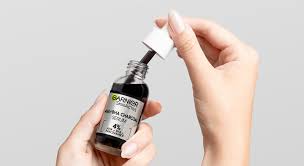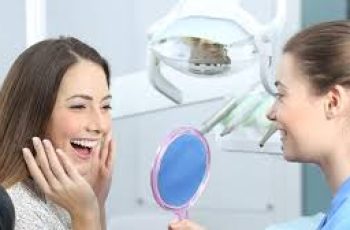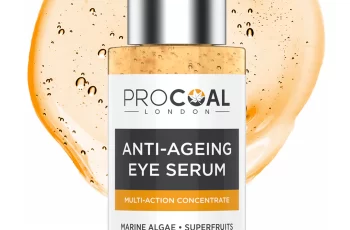Can You Use BHA With Niacinamide?
When using skincare ingredients as potent as BHA, you will often find there is an array of dos and don’ts when it comes to combining it with other powerhouse ingredients. This is exactly what we will be exploring today and trying to figure out whether you can use BHA with niacinamide, so after a quick recap about how each of these ingredients benefit the skin, we will be diving straight in to finding out more.
What is Niacinamide?
Niacinamide, is a form of vitamin B3 and is found in many foods, such as fish, milk, green vegetables, and eggs. You’ll find that for skincare formulations it’s derived from grains, such as yeast, and other cereals once its blended it’s able to deliver impressive results, even for those with a sensitive and reactive skin type. The main benefits of using niacinamide is as follows.
Repairs and strengthens lipid barrier. Niacinamide can do this by helping the skin grow ceramides which strength the skin’s natural protective barrier ensuring it is able to retain moisture. Once the skin barrier contains the correct amount of water it can ward off any free radical damage. This minimises the amount of oxidised stress left on the skin which can occur from exposure to UV rays, pollution, and
Regulates oil production. Niacinamide not only helps those with a dry skin type, but it is also able to regulate oil production in the sebaceous glands. This helps keep the skin balanced and prevents sebum being overproduced.
Treats hyperpigmentation and even skin tone. Surprisingly for some, niacinamide can help with improving the overall look of your skin tone and reducing any signs of hyperpigmentation. With active levels of niacinamide of over 5% many users found an improvement after 4 weeks; this result is thought to occur due to boost in collagen production.
Reduces appearance of fine lines and wrinkles. With niacinamide providing constant moisture to the skin, fine lines of dehydration are reduced completely. You will also find that niacinamide can boost the production of collagen by 54% giving the complexion a plumped and youthful finish, with wrinkles significantly improved.
There you have some examples of the benefits you can expect to see when using niacinamide, don’t forget you can find out more about the ingredient over on the Beauty Insiders blog post.
What is BHA?
Beta hydroxy acid, BHA are a family of acids derived from a variety of ingredients, such as fruit sugars and willow bark. Although there are a few different acids in the collection of BHA, salicylic acid is the most used in skincare formulas. Compared to their cousins, alpha hydroxy acids, AHAs, BHAs are often oil-soluble and have a smaller molecular size meaning they can penetrate further int the skin and work deeply in the pores.
BHAs also provide chemical exfoliation meaning they can slough away the layer of dead skin cells that sit on the surface of the skin. By ridding the face of these barrier, you prevent any development of breakouts, such as blackheads and whiteheads, whilst restoring the complexion and leaving it with a luminous glow.
Now you have had a quick skin ingredient lesson, we can move on to finding out more about teaming these powerhouse ingredients together and the benefits you can expect to see.
Can you use AHA BHA and niacinamide?
Yes, you can, but not all at the same time. This is because the pH levels in the skin will be altered making it more suspectable to irritation, redness, and will have a negative impact on how effective the other ingredients perform on the skin.
Having said that, you can still use all three ingredients, it is just a case of finding the best routine for you and your skin. For example, one routine is to use a cleanser containing an AHA, such as glycolic acid during your morning routine, followed with a salicylic acid enriched toner in the evening. Niacinamide can be used twice a day after each acid, just ensure you’ve left enough time in between applications, 10 minutes or so should do the trick.
What can you not mix with niacinamide?
As a skincare ingredient, niacinamide is known for being versatile and easy to use with other ingredients. You may have found there are several outdated articles explaining how niacinamide should be avoided with vitamin C. Some feel that because the ingredients work in similar ways on the skin, they end up counteracting each other preventing them from working effectively. This is not the case, yes, vitamin C and niacinamide provide similar benefits for the skin, but this doesn’t lead to the negative impacts some fear. What I would suggest when teaming these potent actives together, is to firstly consult with a doctor or dermatologist. Next you can perform a patch test for 24 hours before applying the products to the face, this will avoid unwanted irritation. Finally, always allow at least 10 minutes between applications to help the skin’s pH levels to rebalance and prepare for the next product.
Can I use BHA and AHA together?
Yes, but only if you apply them correctly. There are several effective formulations that contain both acids that deliver impressive results. Opting to use this and whether it is the best product to apply is down to your skin type.
What I mean by this is to avoid mixing both BHA and AHAs together if you have a dry skin type or are prone to sensitivity. This will be too harsh for the skin resulting in a variety of side effects, such as redness and irritation. To reap the rewards of both AHA and BHA you can alternate when you use them in your routine. Each ingredient is formulated into different products making it easier to use each ingredient throughout your routine, whilst preventing the skin from becoming over exfoliated and stripped of the vital oil and water it needs to remain healthy.
Is salicylic acid a BHA?
Yep, in fact, it is the most recognised and used BHA in skincare products. Available in various percentage strengths in over-the-counter formulas, prescribed, and professional treatments. A favourite amongst dermatologists for targeting blemishes, many who are prone to acne and frequent breakouts find salicylic acid to be a skin saviour. Just be aware that due to the potency of the acid can be too much for those with a dry and sensitive skin type. With salicylic acid working further into the skin than other acids if used incorrectly or on the wrong skin type, there could be several negative side effects occurring.
There you have a little more insight to how to use BHA with niacinamide, don’t forget if you have any further questions about using these ingredients, you can come and find one of our experts on Instagram.
DQH Knowledge drop: In your 20s, your skin cell turnover decreases. (Cell turnover is a key component in keeping your skin youthful.) You know what else slows down? Your collagen production. Starting in your 20s, collagen decreases by about 1 percent per year. Should you want to prevent fine lines and wrinkles, start by eliminating behaviors that contribute to premature aging. “If it’s bad for you, it’s bad for your skin,” says dermatologist Michel Somenek.
“Cigarette smoking reduces blood flow to the skin and causes premature wrinkling and a dull skin texture. Making the repeated pursed motion to inhale can also cause smoker’s lines. Alcohol and recreational drugs are toxins for the skin that damage its cellular structure and DNA,” Somenek tells us. “The faster you eliminate vices while you are young, the better chance your skin and body have to recuperate.” Also, adopting an anti-aging routine in your 20s is key. After all, the best offense is a good defense. We spoke to Somenek and experts Joshua Ross and Audrey Kunin to find out more.
Keep reading for the best anti-aging products for your 20s, according to skincare professionals.
Sunscreen
“We all know that the sun is the number one cause of skin aging and starting the prevention in your 20s is very important,” Ross says. “The majority of your sun damage won’t start to appear until you’re in your 30s, so don’t wait until you see it surface or you’ll be behind the curve. Stay ahead of it with a good-quality zinc-based sunscreen worn daily.”
Farmacy Green Defense Daily Mineral Sunscreen
An invisible sunscreen with SPF 30, plus botanical extracts meant to protect skin with tons of antioxidants. Bonus: It’s clean and fine to use under makeup.
Bareminerals Complexion Rescue™ Tinted Moisturizer Broad Spectrum SPF 30
Although we recommend you use your SPF and moisturizer separately, we also understand moments when you don’t have time or energy for that extra step. For those times, this bareMinerals moisturizer is a great thing to have on hand.
Vitamin C Serum
“A great introduction to anti-aging is to start with a vitamin C serum in your morning skincare routine,” Ross says. “It’s a powerful antioxidant that will neutralize free radicals and brighten the skin.” He adds that it’s a great way to counteract the effects of the sun’s harmful rays, which, as previously mentioned, are among the biggest causes of premature aging.
Drunk Elephant C-Firma™ Vitamin C Day Serum
The Drunk Elephant C-Firma is a lightweight serum that promises to give skin a glow by combining the brightening powers of vitamin C with ferulic acid, l-ascorbic acid, and vitamin E. The included sodium hyaluronate is meant to replace hydration loss, so you shouldn’t have to deal with any irritation.
Sunday Riley C.E.O. Rapid Flash Brightening Serum
This potent serum is jam-packed with vitamin C (15 percent, to be exact), which means it’s a potential superstar at both brightening skin and dousing it in antioxidants.
Peptides
Using peptides on your skin has many benefits, says Somenek. “The skin barrier is what defends the body against pollution, UV rays, bacteria, and toxins. It can be damaged by several everyday factors. Using topical peptides aids in building a stronger barrier,” he says. “Peptides comprise elastic fibers, which are a type of protein. These fibers help to make skin appear taut and firm. Peptides can also help repair damaged skin, relieve inflammation, and even out skin tone. Some peptides can kill acne-causing bacteria that is common in 20-somethings.”
Kunin agrees, saying, “Peptides are an excellent entry point for supporting collagen.” She recommends looking for face and eye treatments that contain these collagen-boosting powerhouses.
Charlotte Tilbury Magic Eye Rescue Cream
This Charlotte Tilbury super-emollient eye cream has a base of coconut oil and shea butter (read: it’s incredibly hydrating). Botanicals plus peptides are meant to help reduce dark circles and boost collagen, respectively.
This creamy moisturizer serves up potent collagen-boosting peptides and pycnogenol, and antioxidant-rich vitamin C. “Instead of sitting on top of the skin, peptides penetrate the outer layer so they go deep. The ‘signals’ they send tell the cells to produce elastin and collagen, which are needed for youthful-looking skin,” explains Somenek.
At-Home Peel Pads
Remember that skin cell turnover fiasco we talked about earlier? One way to help support it is by exfoliating. “Exfoliation is important to help keep skin fresh and luminous,” Kunin says. She recommends using at-home peel pads as an easy and effective way to exfoliate.
“The goal in your 20s is to fight the slowing pace of cell turnover. It is wise to use products that gently exfoliate, yet still remove oil and other impurities. Products that have Alpha Hydroxy Acids (AHA) or Beta Hydroxy Acids (BHA) are a good choice.”
According to Somenek, you should only exfoliate two to three times a week. “People of all ages are guilty of over-exfoliating and that can be too much of a good thing,” he says.
Dermadoctor Kakadu C Intensive Vitamin C Peel Pad
A few swipes of this Derma Doctor powerful peel pad promise to leave your skin glowing and smooth, thanks to the seven (yes, seven) types of chemical exfoliants, including AHA and BHA. It also contains vitamin C via Kakadu plum extract for added brightening and antioxidant protection.
KEY INGREDIENTS Kakadu plum extract is sourced from the Kakadu plum, a fruit grown in northern Australia. It contains vitamin C, which restores the skin’s natural barrier, increases collagen production, and soothes irritation.
Dr. Dennis Gross Skincare Alpha Beta® Universal Daily Peel Pads
These are the gold standard of peel pads, with a cult following and over 900 five-star reviews on Sephora. They’re easy to use and contain a blend of anti-aging exfoliating acids.
Emollient Night Cream
“In your 20s, you need to start upping the hydration in your skincare routine. You may have been cautious of over-moisturizing because of acne in your teens, but as you enter your 20s, your skin transitions and becomes drier,” Ross says. “I recommend an emollient night cream added into your evening skincare regimen.”
“Twenty-somethings need to make sure that they are not using creams that will clog their pores and cause excess oil production,” says Somenek. Opt for non-comedogenic products.
Cerave Skin Renewing Night Cream
One great choice is the CeraVe Skin Renewing Night Cream, which is a non-comedogenic night cream that leaves skin soft and glowy. It combines the moisturizing powers of ceramides and hyaluronic acid.
RoC Retinol Correxion Max Hydration Creme
“The best night cream ingredients contain retinol, benzoyl peroxide, and/or salicylic acid or hyaluronic acid. The goal is to moisturize, yet remove excess oil,” says Somenek. This Roc Retinol Correxion cream fits the bill as it contains both hyaluronic acid and retinol so it promises to moisturize while also being non-comedogenic.



